The trend of flat and simple ceilings have fallen wayside. Because people nowadays are eyeing on products that make the typical flat ceiling look attractive but with minimal costing.
So with the recent surge of false ceiling it has become easier for people to embellish the beauty of any space whether it be an office, commercial complex, residential complex or theatres.
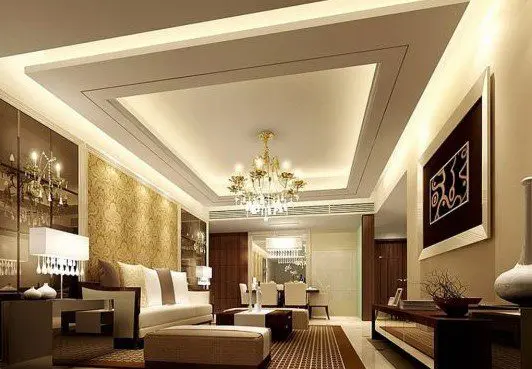
What are false Ceilings
False ceilings are often secondary ceilings that are hung below the main ceiling with the help of suspension cords or struts. These ceilings are crafted from a wide range of materials such as POP (plaster of Paris), gypsum board, asbestos sheets, particle board, aluminium panel, wood etc. They are also known as dropped ceiling or suspended ceiling.
General Benefits of False Ceiing
The general advantage that everyone is familiar with is – it improves aesthetical appearance and proportion of interior spaces but this benefit is just the tip of an iceberg as there are a whole lot of benefits that false ceiling provides few of them are listed below:
- Hides ducting and other structural elements that hinder the beauty of the room.
- Works as a heat insulator.
- Works as an acoustical barrier by reducing echo problems. (Especially in theatres, conference halls, auditorium etc.)
- Performs as an anti-microbial element (required specially in health care centres, hospitals and clinics).
- False ceiling can also act as a fire separator if the material used in making ceiling tiles are mineral fibre or fire rated wood panels.
- The space left between struts and ceiling tiles acts as a duct which carries all the wiring and hidden lighting system.
Advantages and Disadvantages of False ceiling
Advantages of False Ceiling
- It is very easy to install false ceiling with the help of right kind of tools and skilled professionals.
- False ceilings gives a smooth surfaces and covers undulations in the slab concrete etc.,
- It is economical and flexible in design
- A false ceiling hides the duct work, pipes and electrical wires giving the ceiling a clean and finish look.
- It is good for sound absorption and in acoustic
- In case of repair it is easy to rearrange the panels or repair the gypsum board
Disadvantages of False Ceiling
- False ceiling can reduce the height of a room by several inches or feet.
- Sagging is possible in case of false ceiling and it requires maintenance.
- In case of natural calamities the false ceiling may turn out to be unstable.
Classifications of False Ceiling based on Materials
The classification is totally based on 3 criteria:
- Place of application
- Ambience needed
- Economy available
The most commonly used false ceiling materials are as follows:
1. Gypsum Board False Ceiling
Gypsum is the most commonly used false ceiling material. The panels come with either tapered or square edges. Gypsum boards can be easily fixed either by nailing directly to ply or other plain surfaces or placing on a galvanised iron (GI) metal grid.
Gypsum board comes in standard sizes of 6 feet X4 feet and 8 feet X 4 feet.
types of Gypsum boards available in market
- Regular Gypsum Board
- Fire Resistant Gypsum Board
- Moisture Resistant Gypsum Board
- Fire and Moisture Resistant Gypsum Boards
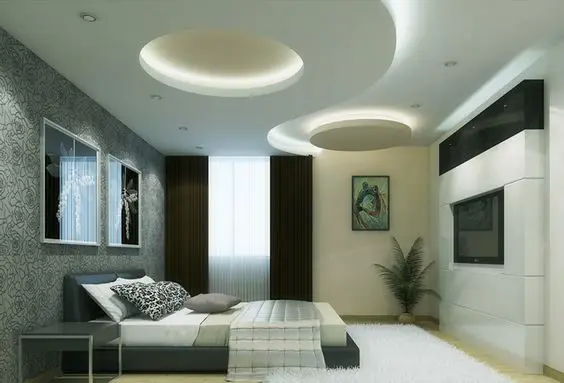
Features of Gypsum Board
- Light in weight
- Flexible in Design and construction
- Good Sound and Heat Resistant
- Fire and moisture resistant
- Allows different shapes and customised designs.
- Bears load up to 15 kg.
price of Gypsum Board False Ceiling
Gypsum board false ceiling rates vary from Rs. 60 per sqft to Rs. 120 per sqft depending on the design, materials you choose etc.,
2. Grid False Ceiling
Grid False Ceiling is one of the most common types of false ceilings used in commercial office spaces. These type of ceiling are suitable for large range of applications. They are ideal for concealed wiring. These metal ceiling panels are installed either on steel T- sections or cross sections and then suspended by rods.
Types of Grid Ceiling Materials
- Mineral Fiber Grid Ceiling
- Metal Grid Ceiling
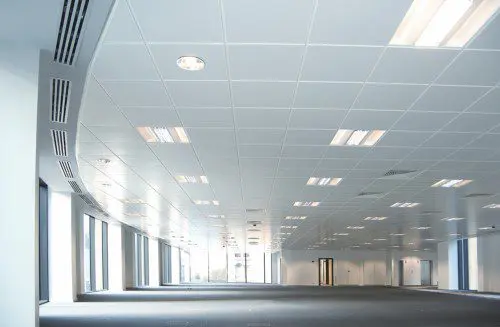
Features of Grid Ceiling
- Easy to install and easy to maintain. The tiles can be replaced with little or no effort
- Grid Ceilings are Economical
- Easy to Maintain as you can remove the ceiling tiles whenever you want
- They have monolithic designs
- Grid Ceiling have very good Sound proofing capabilities
- General size used is 600x600mm but available in other sizes also like 300mm X 1200mm etc.,
3. Plaster of Paris (POP) Ceiling or Murga Jaali Ceiling
Plaster of Paris is most commonly used false ceiling material. It is cheapest amongst all the false ceiling materials. POP is mixed with water and is applied to fibreboard or wood base which suspends to form the ceiling. It requires artistic workmanship.
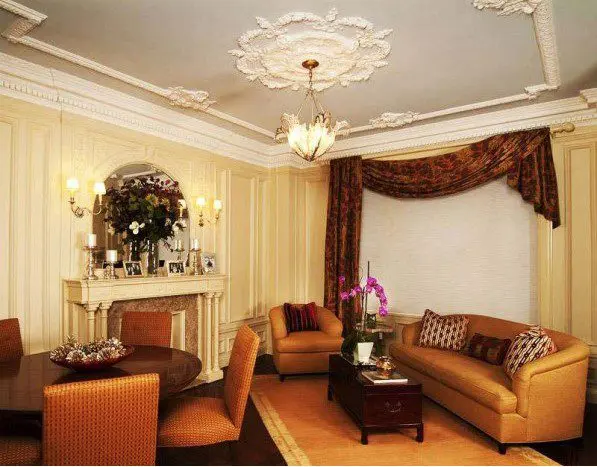
Features of POP:
Plaster of Paris is most commonly used false ceiling material. It is cheapest amongst all the false ceiling materials. POP is mixed with water and is applied to fibreboard or wood base which suspends to form the ceiling. It requires artistic workmanship.
Features of POP False Ceiling
- Smooth finish
- Surface can be painted and customised
- Easy to construct
- Lightweight
- Thickness- 12-15 mm
- Price depends on design pattern
4. Plywood Ceiling
Plywood ceilings are popular for their visually appealing aspects. These type of ceilings are created with strips of ply which are either nailed or glued together.
The strips are supported with the help of ply. Plywood ceiling due to its insulating property, it is used in places with cold climate.

Features of Plywood Ceiling
- They are strong
- Allows different shaped and customised designs
- Can be treated for longer life span
- Difficult to maintain
- Appearance Changes with time
- Expensive
5. PVC False Ceiling
PVC ceiling is also one of the most commonly used ceiling system. It solves the problem of cleaning and maintenance. This type of ceiling is suitable for all types of climate. It also incorporates flush fitting and hidden lighting system. These are one of the most hassle free and easy to install false ceilings.
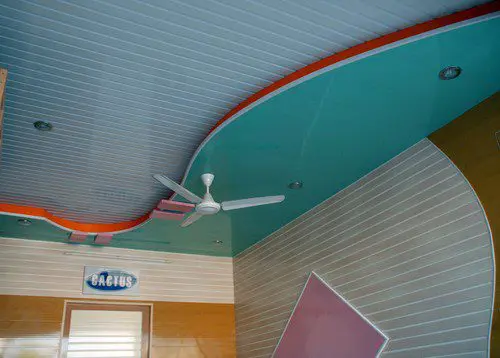
Features of PVC Ceiling
- Light weight
- Moisture resistant
- Economical
- Low maintenance
- Waterproof
- Allows different shapes and customised designs
- Durable
Recommendation on Use of False Ceiling
False ceilings work well only when the following conditions are taken in consideration:
- Constructed and maintained proper with time
- Proper floor to ceiling height must be maintained
- The material is chosen according to the type of ambience required
- According to the climatic considerations.





